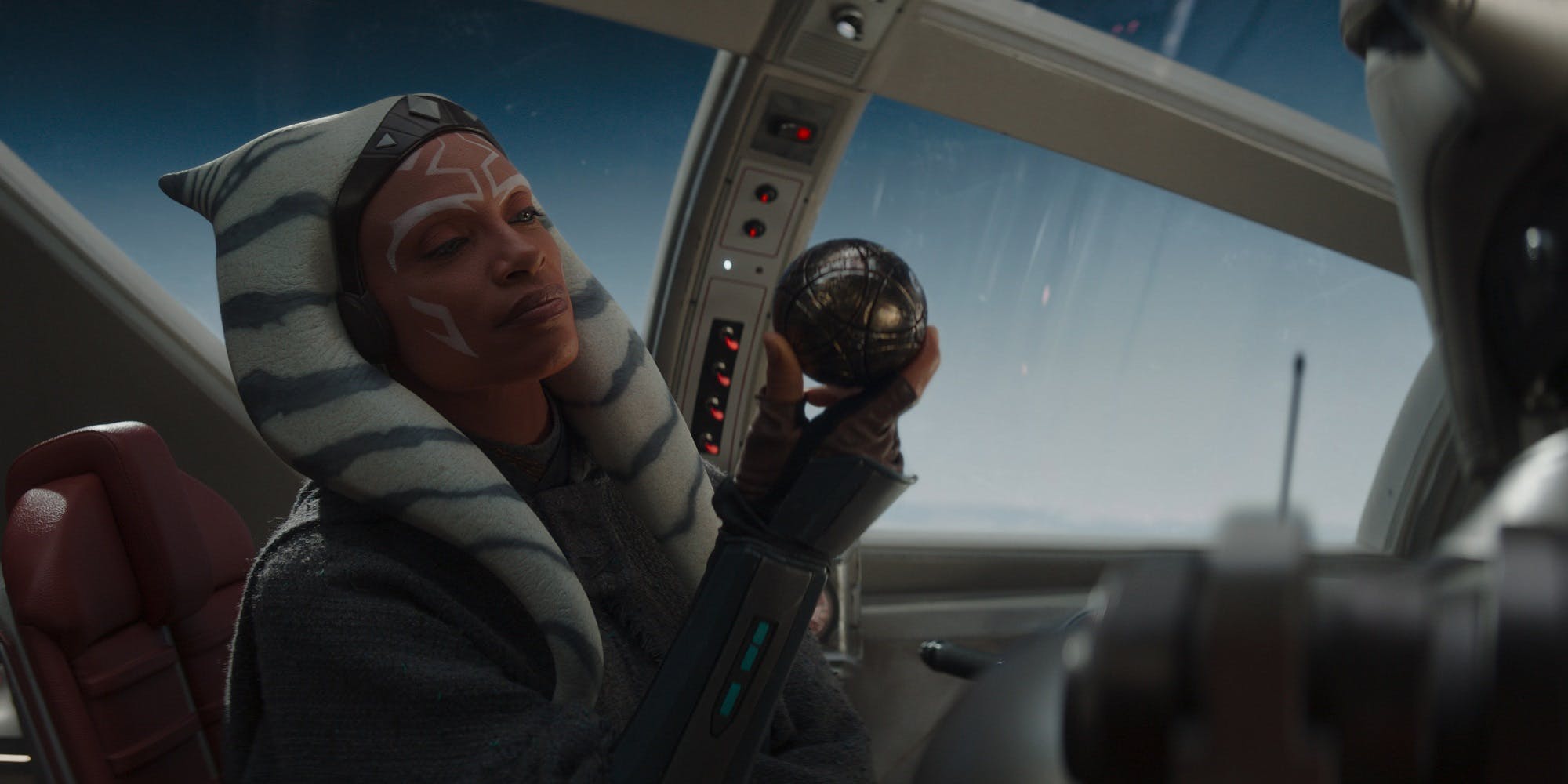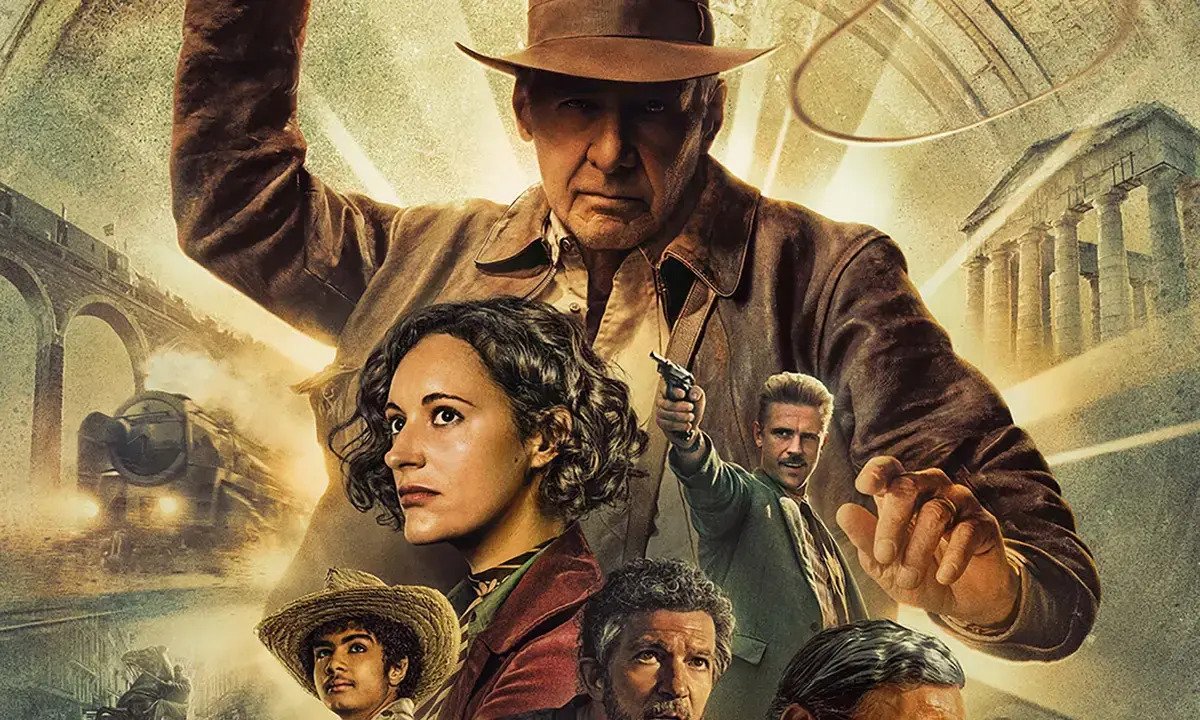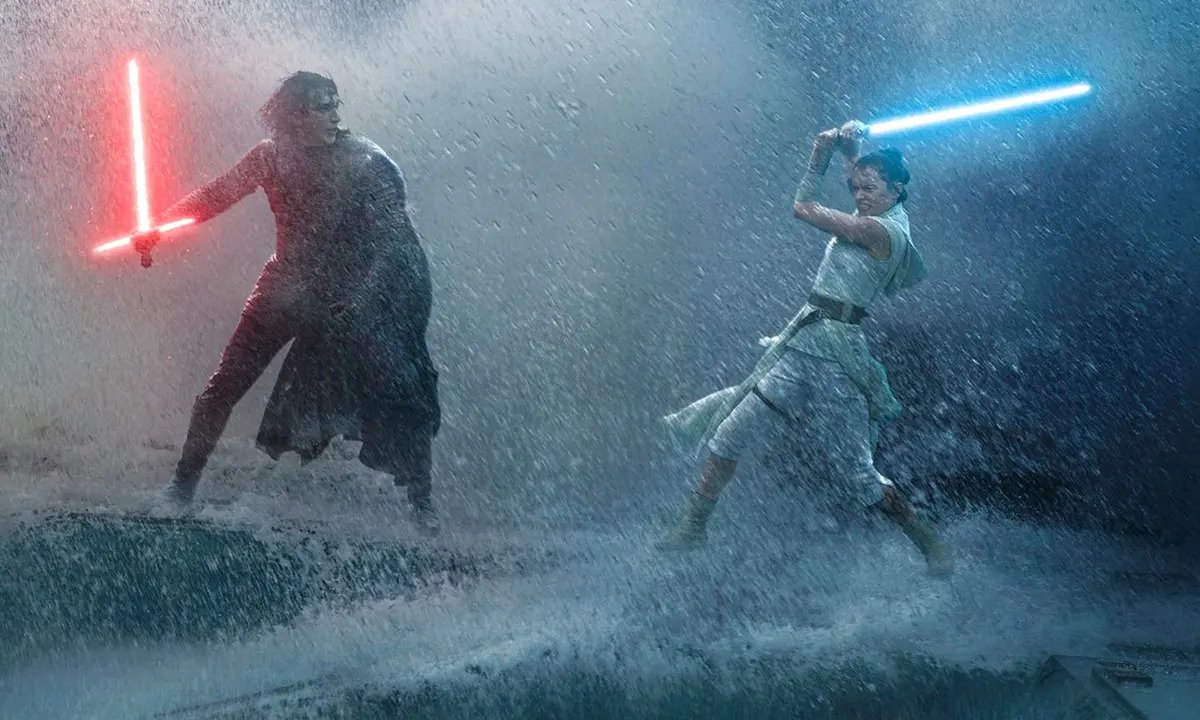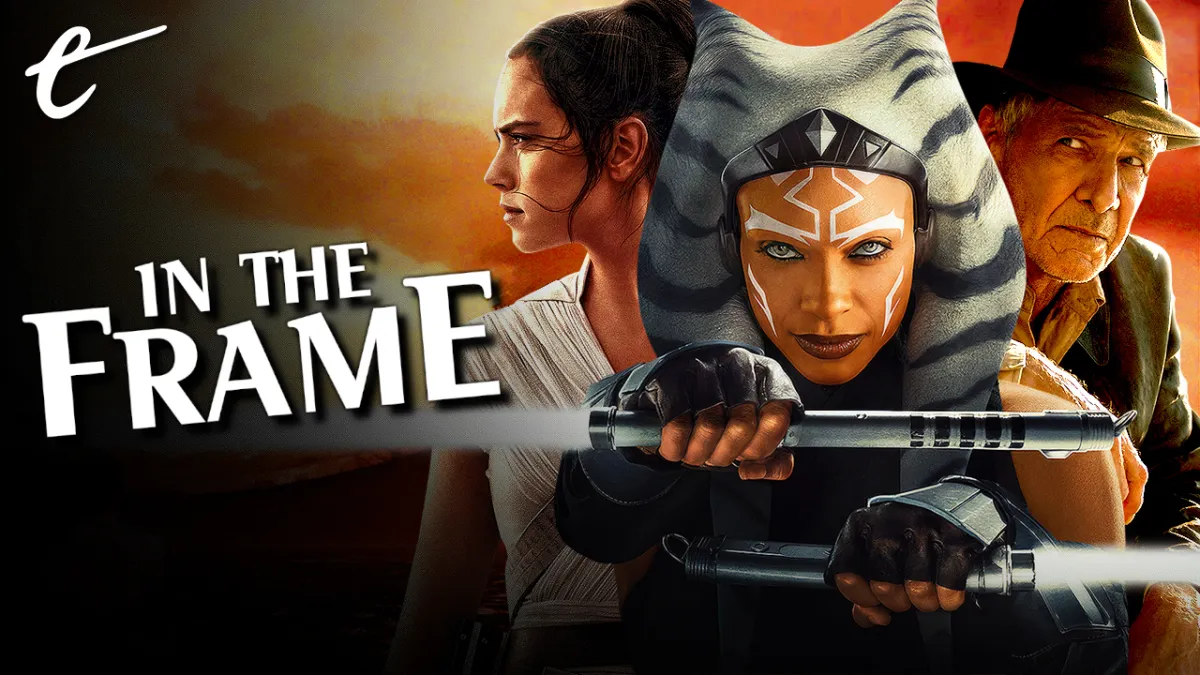This discussion contains light spoilers for Ahsoka, Star Wars: The Rise of Skywalker, and Indiana Jones and the Dial of Destiny.
Ahsoka is ostensibly a race against time, with two competing factions scrambling to reunite with old allies. Ahsoka Tano (Rosario Dawson) and Sabine Wren (Natasha Liu Bordizzo) hope to be reunited with their old friend Ezra Bridger (Eman Esfandi). On the opposite side, Morgan Elsbeth (Diana Lee Inosanto) is hoping to locate Grand Admiral Thrawn (Lars Mikkelsen), to provide a rallying point for the remnants of the First Galactic Empire. This is what the show is about in theory. In practice, it’s about maps.
Ahsoka is halfway through its first season. These first four episodes have been obsessed with stellar cartography. Ahsoka herself is introduced recovering an orb containing a map that could lead to Ezra. That map is stolen by Shin Hati (Ivanna Sakhno), who takes it to Morgan on the planet Seatos. Morgan plugs the orb into an ancient stone monument, and it projects ancient star charts. Extended sequences in the first four episodes take place inside these holographic projections.
Obviously, Star Wars is pulp fiction. These sorts of stories tend to be built around plot devices, objects over which the characters might fight. These elements give the story a sense of dramatic stakes. It often doesn’t matter what the object in question is or why the characters want it. All that matters is that the audience understands that these players are locked in a game with a definitive prize. In basic narrative terms, the map gives Ahsoka and Morgan something to jostle over.
However, it’s beginning to feel a little exhausting. After all, the map doesn’t represent actual stakes. Ahsoka and Morgan don’t really want the map, they want what is waiting at the end of the map. So the map is really an abstraction. It’s a delaying tactic. It allows the show to stretch the drama out over eight episodes. It’s also completely pointless. After all, no matter who ends up with the map, the audience understands that Ahsoka will be reunited with Ezra and that Thrawn will return.
This narrative shell game, where the characters aren’t looking for something in particular but for directions to something in particular, wouldn’t be as frustrating if it were an isolated problem. Unfortunately, Ahsoka is just the latest example of a larger trend in modern pop culture. These existing franchises are increasingly about maps. These modern takes on established properties are often about characters racing to find directions so they can actually begin the adventure.

Star Wars: The Rise of Skywalker is a prime example. That movie opens with Kylo Ren (Adam Driver) recovering a Sith wayfinder that brings him to Exegol, where he encounters the somehow resurrected Emperor Palpatine (Ian McDiarmid). However, to pad the movie’s running time, Rey (Daisy Ridley) has to recover a Sith dagger which provides directions to another Sith wayfinder. However, this turns out to be a narrative dead-end. Ren destroys the second wayfinder, and Rey uses the first to journey to Exegol.
If that plot structure sounds both convoluted and familiar, then perhaps it evokes Indiana Jones and the Dial of Destiny. In that movie, the eponymous dial has been split in two. The first half is recovered in the movie’s prologue, but much of the movie is spent chasing the second. Indiana Jones (Harrison Ford) finds clues in Basil Shaw’s (Toby Jones) diary that lead him to a “graphikos” tablet that in turn leads to the second half of the dial. It’s a map to a map to the movie’s third act.
In some ways, this approach speaks to the internal logic of modern franchise storytelling. These movies and television shows are often built around the promise of what comes next, as evidenced by their frequent use of post-credit scenes or fan-service easter eggs. It can often feel like the intended audience for these pieces of media aren’t fans who enjoy the current film or series, but instead the fans rabid for the next installment.
As such, the structure of shows like Ahsoka or movies like The Rise of Skywalker emulate the experience of modern fandom, where it often feels like what is being served is not intended to be filling or satisfying, but instead an object to whet the appetite for what might be coming next. If these franchise installments are vague, that’s just good marketing. Being specific about what is coming next just risks alienating fans. It’s easier to have them believe that it could be anything.
After all, halfway through the season, Ahsoka has only barely featured Eman Esfandi as Ezra and has yet to reveal what Lars Mikkelsen will look like as Thrawn. Those fan-pleasing revelations may be saved for the fifth episode, which is screening in theaters. However, they come at the cost of the story’s actual stakes. Instead of demonstrating why the characters want to reunite with Ezra and Thrawn, the focus on the map allows the show to keep Ezra and Thrawn in reserve to play later.
Of course, this structure can work. Raiders of the Lost Ark is essentially structured as a series of setpieces built around Indiana Jones following clue-after-clue-after-clue to the eponymous artifact. However, Raiders of the Lost Ark is one of the best movies ever made. The Rise of Skywalker and Indiana Jones and the Dial of Destiny are not. Steven Spielberg can get away with breaking lots of rules by virtue of being one of the greatest living American filmmakers.

Even then, Spielberg seems to have been aware of the limits of that approach. Spielberg’s Indiana Jones sequels largely avoid or temper that structure. Indiana Jones and the Temple of Doom largely takes place in a single location. Indiana Jones and the Last Crusade and Indiana Jones and the Kingdom of the Crystal Skull are smart enough to build their fetch quests around emotional midpoint introductions of characters Henry Jones Sr. (Sean Connery) and Marion Ravenwood (Karen Allen) respectively.
This gets at the real problem with structuring a movie or show around a character looking for a map to a map to the third act. Although these plots are convoluted and distracting, the issue isn’t what they add to these stories. It’s what they serve to exclude. These endless quests for maps and directions serve to prevent any emotional engagement with the characters or the stories. Nobody really cares about a map, it’s just a nice hook on which a film or show can hang an action scene.
There is a very revealing moment in Indiana Jones and the Dial of Destiny. The villainous Jürgen Voller (Mads Mikkelsen) has just executed Indy’s old friend, Renaldo (Antonio Banderas). Helena Shaw (Phoebe Waller-Bridge) uses some improvised explosives to help Indy escape Voller’s clutches. As they speed away from Voller, Helena quips, “I have said it before, and I will say it again! When you’re in a tight spot, dy-no-mite!” Indy cuts her off, “My friend was just murdered.”
It’s a human moment in a film that is often lost in unconvincing setpieces. It suggests an emotional cost to this life of adventuring. For a moment, it seems like Indy might actually reflect on everything that this life has cost him. However, that might ruin the mood. So the script clumsily segues to how the tablet that Helena decoded for Voller was actually a decoy and that the real directions were hidden in a metal carving inside the wax tablet. It’s just more plot — more stuff happening.
It also doesn’t mean anything. Helena lied to Voller about the tablet, so she and Indy now have a tactical advantage. They have access to a map that Voller doesn’t even know existed. It’s a victory for Indy and Helena. However, because this isn’t a culmination of anything meaningful, Indy and Helena can’t lose Voller. So Voller just looks through his binoculars, notices the direction that Indy and Helena are heading, and realizes that he’s been duped. So nothing actually happens.

This is the problem with Ahsoka. The show has done a fairly decent job of articulating the backstory and plot mechanics for audience members who haven’t watched Star Wars Rebels. However, it has made no effort to engage with the emotional or character states. The audience might intellectually understand why Ahsoka and Sabine care about Ezra, but the show has spent no time actually showing or developing that. The characters don’t have arcs, even as they follow plotted courses through space.
This is the appeal of maps as plot devices. They offer the illusion of movement. In a very literal sense, maps allow films and shows to suggest momentum. Characters begin in one specific place and end in another physical location. To an observer watching through the corner of their eye, it looks like a character has progressed. However, in more cynical terms, it allows these films and shows to avoid doing the hard (and potentially controversial) work of actually developing characters.
It seems unfair to compare Ahsoka to Andor. However, Andor is the perfect counterpoint. Over the course of that season, Cassian Andor (Diego Luna) goes on a literal and an abstract journey. The show is the story of Cassian being radicalized. He moves through physical space, traversing the universe, but he also changes himself. His destination is emotional as much as it is physical. By the end of the season, it isn’t just Cassian’s surroundings that have changed. He has changed.
This is perhaps what these movies and shows are afraid to embrace. Modern franchises are extremely conservative, terrified that fans might overreact to the idea that their heroes can change and grow in the way that characters in stories generally have to change. It creates a stagnancy. These characters are running in place, their lives unable to progress beyond some established and idealized archetype. It’s what Stan Lee described as “the illusion of change.”
If these characters and franchises are stuck running on treadmills, the promise that they’ll find a map at least offers the fantasy of forward movement without actually offering progression. That may be why shows like Ahsoka keep coming back to maps as plot devices. A map isn’t a concrete object, it’s a delaying tactic. It’s the vague promise of something at the end of the rainbow, if the audience just keeps watching. That’s the thing about maps: they’re never a final destination.






Published: Sep 11, 2023 11:00 am